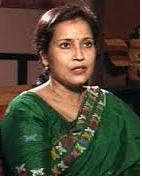Assam is one of the states of India. The capital of Assam is Dispur and the largest city in the state is Guwahati. It has Arunachal Pradesh, Nagaland and Manipur in the east, West Bengal and Meghalaya in the west, Arunachal Pradesh in the north and Nagaland, Manipur, Mizoram, Meghalaya and Tripura in the south. The state has its own culture, language and script and so it is called a Mosaic of Cultures. Assam is famous for tea cultivation.
History of Assam
In ancient days, Assam was called as Kamarupa and many dynasties including the Varmanas, Salstambhas and Kamarupa Palas ruled this place. It was ruled by Ahoms for about 600 years and all the attempts of the Mughals to capture the place failed. When the Assamese army was defeated by the Burmese army in 1822, it came under the conrol of the Burmese province. After the First Anglo-Burmese war in 1824, a part of Assam became a part of the British territory. Little by little the whole of Assam came under British rule. After the Indian independence it became a separate state having 27 districts and with legislature containing 126 seats.
Geography and Natural Resources of Assam
The state spreads over an area of 78,438 square kilometers. About 35.48% of the total area is covered by forests. The Brahmaputra River and Barak River flow through the state. The natural resources of Assam are petroleum, coal, limestone, sillimanites, clay, feldspar, natural gas and magnetic quartzite. The deciduous forests, bamboo forests, tropical rainforests and wetlands cover the forest area. The important species of animals found here are Bengal Florican, Black breasted Parrotbill, Pygmy Hog, Great Adjutant, Jerdon’s Babbler, Hoolock Gibbon and 820 varieties of birds.
Assam State Map With Districts
There are 27 districts in Assam as of June 2011 and most of them were created during 80s and 90s. The districts are further divided into Mohkumas or sub-divisions. The governance of the district was carried on by the Jilla Parishad. There are 26,247 villages in Assam having 2,489 village panchayats. The revenue circles of the districts are called mouzas. Given below is the Assam state map with all 27 districts marked.

List of Districts of Assam
People and Culture of Assam
The total population of Assam is 31,169,272 according to the 2011 census. The male female ratio is 1000: 954. Forty five languages are spoken here. There three major languages are Austroasiatic, Sino-Tibetan and Indo-European. The schedule tribes of Assam namely Bodos make 40.9% of the total population. Some other tribal groups are Miri, Barman, Borokachar, Hajai, Mech, Dimasa, Singhphho, Khampti, Chakma, Jaintia, Pnar, War, Bhoi, Karbi, Rabha and Kuki. The majority of the people follow Hinduism and Islam and Christianity comes after that. Sikhs, Buddhists and Jains are also living in small minorities.
The oldest languages spoken in Assam are Dimasa and Bodo. Some of the Tai languages spoken here are Tai Phake, Tai Aiton, Khamti, Khamyang, Ahom and Turung. Many of the dialects are extinct now. In Barak Valley region, the official language is Bengali. The tribal people of the tea garden districts speak Santali.
People of Assam celebrate Bihu festival, Durga Puja, Eid Ul Fitr, eid Al Adha and Bushu Dima. The traditional festivals of Assam are Rongker, Me-dem-me-phi, Kherai, Garja, Hapsa Hatarnai, Karbi Youth Festival, Porag, Sokk-Erroi, Hacha-Kekan and Ali-Aye-Ligang. The traditional dance drama of Assam is Ankiya Nat. The Bihu dance, Hucory, Banjar Kekan, Bhortal Nritya, Sattriya, Deodhoni Nritya, Beula Dance and Nimso Kerung are some of the other dance forms.
Assam is famous for its fine arts and crafts. The crafts made of cane, bamboo, brass, silk, terracotta works, jewelry making and ivory crafts are some of the traditions of this region. There are many silk industries here producing Pat silk and Eri silk.
Education of Assam
According to the 2011 census, the literacy rate of Assam is 73.18%. The male literacy rate is 78.81% and the female literacy rate is 67.27%. The state government has taken various measures to promote the education of the state. The Assam Valley School at Balipara in Tezpur is one of the best boarding schools of India.
The universities in Assam are Dibrugarh University at Dibrugarh, Gauhati University at Guwahati, Assam University at Silchar, Tezpur University at Tezpur, Assam Agricultural University at Jorhat and K. K. Handique State Open University. The engineering colleges in Assam are Regional Engineering College at Silchar, Jorhat Engineering College at Jorhat, Assam Engineering College at Guwahati, Indian Institute of Technology at Guwahati and Rajiv Gandhi Institute of Petroleum Technology at Sibsagar.
The medical colleges in Assam are Assam Medical College in Dibrugarh, Gauhati Medical College and Hospital in Guwahati, Silchar Medical College and Hospital in Silchar, Jorhat Medical College at Jorhat, Assam Government Ayurvedic College at Guwahati, Dr. J. K. Saikia Homeopathic Medical College at Jorhat and Fakhruddin Ali Ahmed Medical College at Barpeta. The National Law School and Judicial Academy is one law college located in Guwahati.
Economy of Assam
Assam is one of the backward states in India. When the annual growth of India was 6%, the growth of Assam was only 3.3.%. However it has improved in 2003 – 2006. The growth rate of manufacturing sector is 3.4%. 69% of the total working population is employed in agricultural industry. Assam produces the finest tea variety called Camellia Assamica. Other crops grown here are sweet potato, jute, potato, rice, areca nut, turmeric, papaya, citrus fruits, herbs, vegetables and spices.

Though there are many rivers and 1.5 million hectares of water bodies having 165 varieties of fishes, fish production is not satisfactory due to the primitive methods followed. About 15% of the crude oil comes from Assam. There are many oilfields located in Guwahati, Digboi and Bongaigaon region. The four refineries situated in Assam are Digboi, Noonmati, Dhaligaona and Numaligarh. The sugar mills are located in Barua Bamun Gaon, chemical fertilizers are located at Namrup, paper mills at Jagiroad and other industries are textile mills, silk mills and jute mills.
Assam Transport
Assam State Transport Corporation runs buses in Assam. It has different types of buses including the latest Rihno buses. The transport corporation also runs courier services, cargo services and has computerized ticketing system. There are 65 railway stations in Assam and the important ones among them are Dibrugarh Town, Guwahati, Jorhat, Jorhat Town, Lumding Junction, Mariani Junction, Bongaigaon, Silchar, Tinsukia Junction, Kamakhya and Dibrugarh. The airports in Assam are Chabua Air Force Station, Dibrugarh Airport, Jorhat Airport, Lokpriya Gopinath Bordoloi International Airport, North Lakhimpur Airport, Rupsi India Airport, Silchar Airport, Sookerating Airport and Tezpur Airport.
Assam Tourism
There are many attractive places in Assam including National Parks, Wildlife sanctuaries and Bird sanctuaries. The wildlife sanctuaries are Pobitora wildlife sanctuary, Sonai Rupai wildlife sanctuary, Bura- Chapori wildlife sanctuary, Laokhowa wildlife sanctuary, Dehing Patkai wildlife sanctuary, Chakrashila wildlife sanctuary, Garampani wildlife sanctuary, Gibbon wildlife sanctuary, Nambor wildlife sanctuary, Pani Dihing wildlife sanctuary, Bherjan-Borajan-Padumoni wildlife sanctuary, Morat Longri wildlife sanctuary and Amchang wildlife sanctuary and two bird sanctuaries at Deepor Beel and Pani Dihing.































